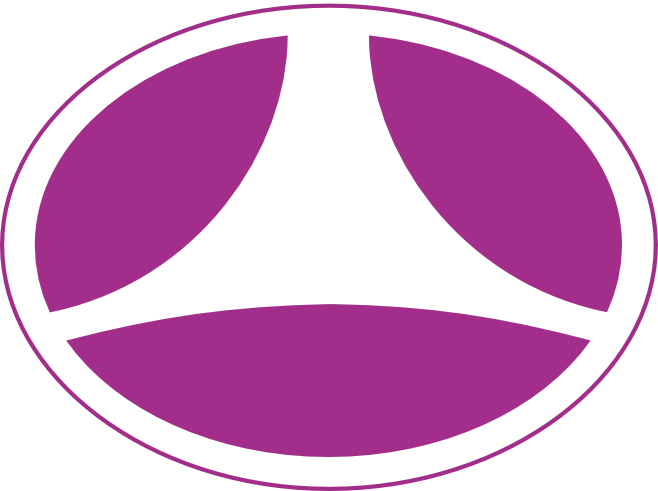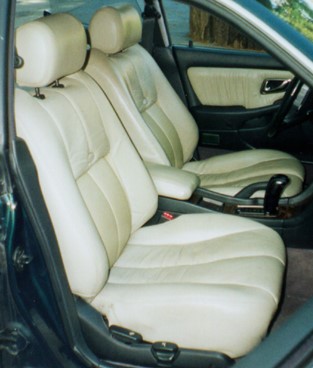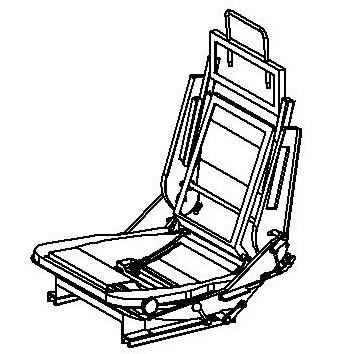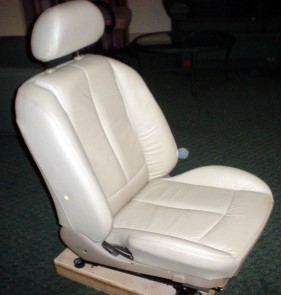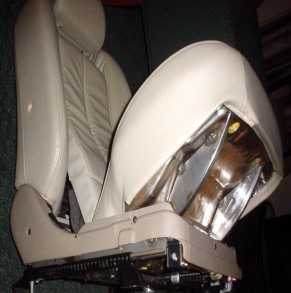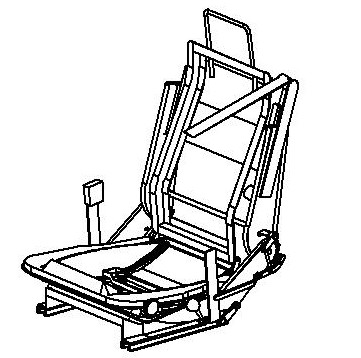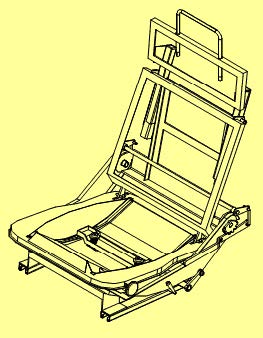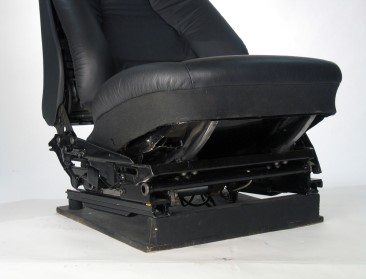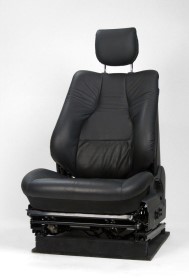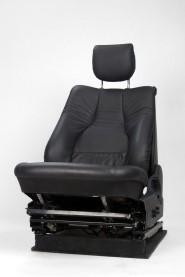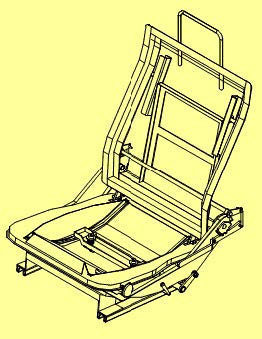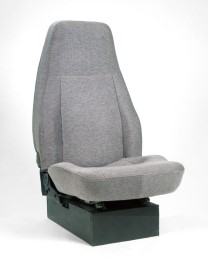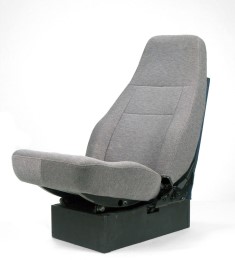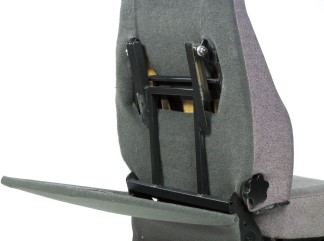Counter Balanced Motion Seat for Automotive Safety and Comfort
The Counter Balanced Motion (CBM) Seat is an optimized comfort control mechanism with crash safety and cost saving advantages. The main feature of this unique device is the arcuate path of motion and a spherical motion component of the seat that provides comfort adjustment and also acts as a safety restraint.
For comfort, the CBM Seat passively supports posture change. The movable backrest and lumbar offer continuous back support while driving. The CBM Seat automatically balances seat tilt and lumbar angle with optimal weight distribution, thus reducing driving fatigue. The seat, backrest, headrest and lumbar adjust to the posture and movements of the occupant without hand-activated adjustment.
For frontal crash safety, the CBM Seat utilizes the seat and lumbar cushions as a passive crash safety restraint. It automatically increases seat containment angle to stop the occupant, redistributing forces and improving crash dynamics. The CBM Seat also actuates a backrest and headrest mechanism that increases rear crash safety.
In a typical frontal impact, the occupant continues forward and is restrained by the belt and airbag, with virtually no safety contribution from the seat. The traditional seat in Figure 1, is compared to the CBM Seat 50 milliseconds into a crash simulation. The traditional seat shows visible space between the lowerbackrest and the driver’s back. The body is sliding forward and escaping the seat.
With the CBM Seat, effective deceleration has already begun. The driver’s lower back is still in contactwith the lumbar support to control rebound and, more importantly, the face is not yet in contact with the airbag.
Counter Balance Motion Seat
Fixed Seat
In the crash simulation stills above, the angles the seat pan and bottom cushion make with the horizontal plane are notably different. The body is kept in contact with the seat and begins to dissipate upper and lower body impact forces instantaneously, even before the seat belt or airbag can act. This occurs because the CBM Seatutilizes an arcuate path located proximate to the occupant’s center of gravity. The CBM Seat is an occupant restraint. It complements with the combined use with belts and or airbag (SRS) and also unbelted to improve safety performance above fixed seats.
Crash simulation of the CBM Seat utilizing a softer airbag and softer belts, yield a reduction in injury loads. All tests have shown that the CBM Seat effectively prevents submarine of the lower body. These advantages are also seen in 25mph, unbelted frontal as well as 35mph offset-frontal impact simulations.
Results and Comparison of Crash Safety Tests
Frontal Belted Impacts (35mph NCAP)
Current Safety Optimization: CBM Seat vs. NHTSA NCAP testing of the 2005 Nissan Maxima
Sled Validation Testing: CBM Seat vs. NHTSA NCAP crash testing of the 2005 Nissan Maxima
Current Safety Optimization: 2005 CBM seat vs. Identical seat but with CBM motion disabled (Fixed)
Frontal Unbelted Impacts (25mph)
Optimization of CBM Seat vs. Identical seat but with CBM motion disabled (Fixed Seat)
Rear Belted Impacts (25mph)
Optimization of CBM Seat vs. Identical seat but with CBM motion disabled (Fixed seat)
Frontal Belted Impacts Performance
NHTSA’s Full-Frontal Impact Star Rating, shown in Figure 2, is based on the combined probability of head and chest injuries for an average adult male. CBM technology alters occupant motion during a crash, reducing key accelerations and lowering the probability of these injuries.
Figure 2: NHTSA Star Curve For Full-Frontal impact
CBM Proof Of Concept By TASS International
Following is an analysis of validated Madymo tests compared to actual sled tests results by TASS International
Madymo Frontal Impact Study of Optimized 50th Driver Model : 35mph
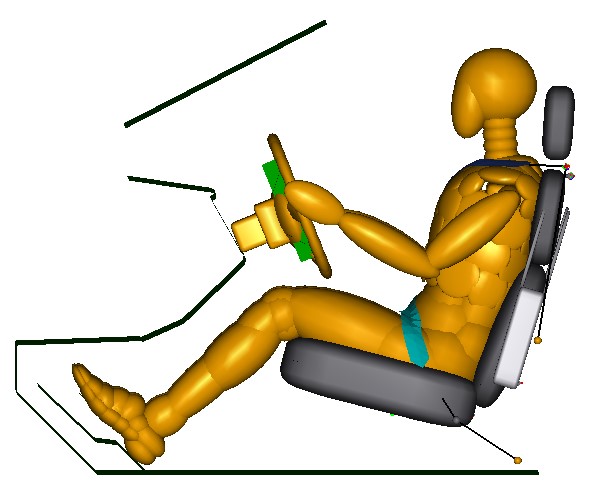
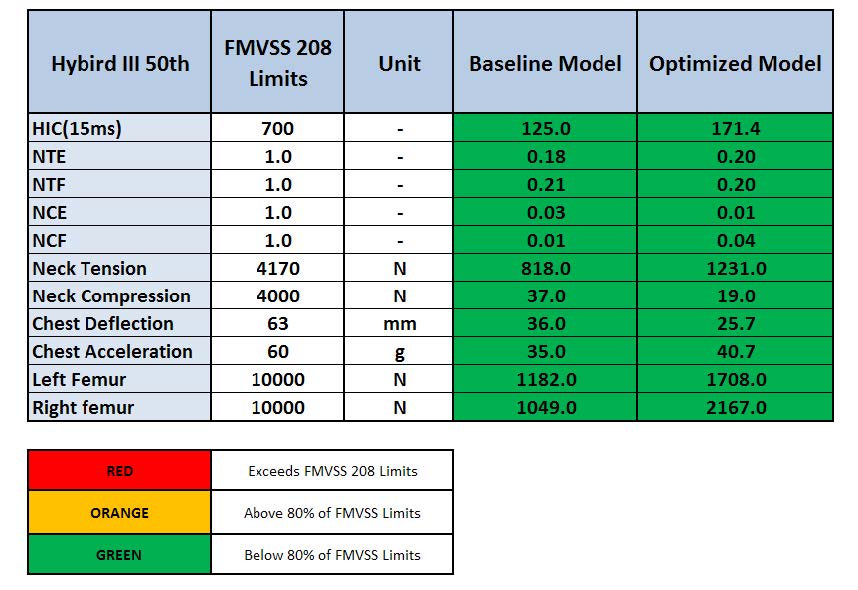
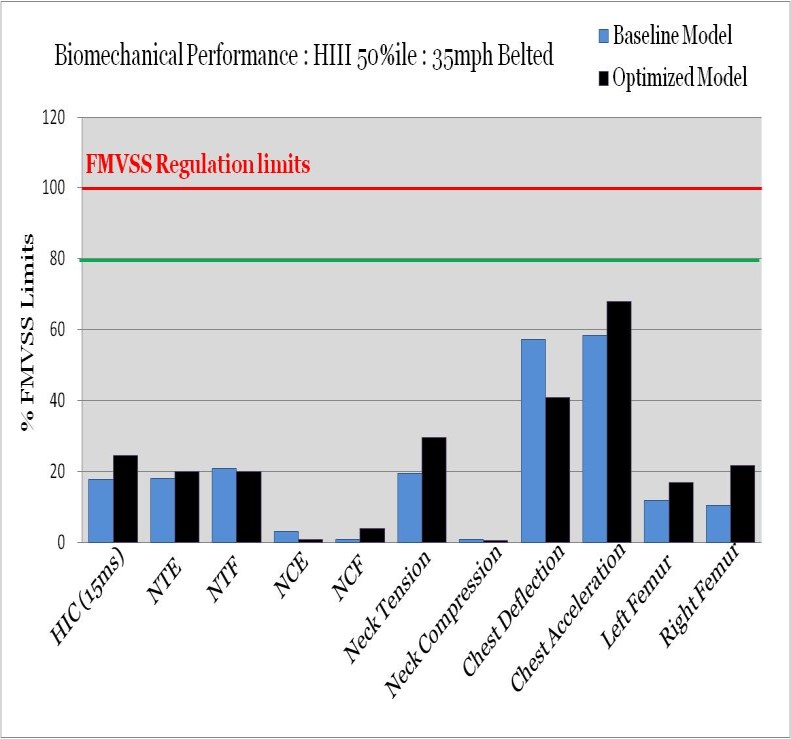
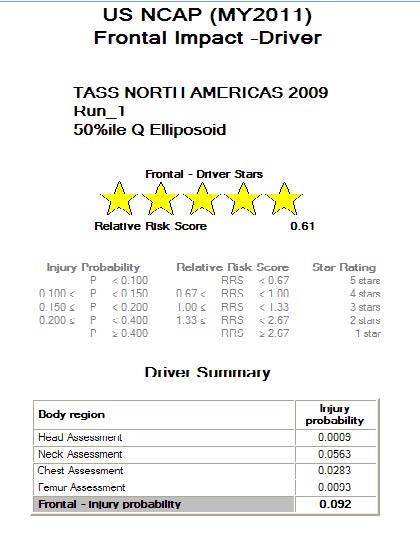
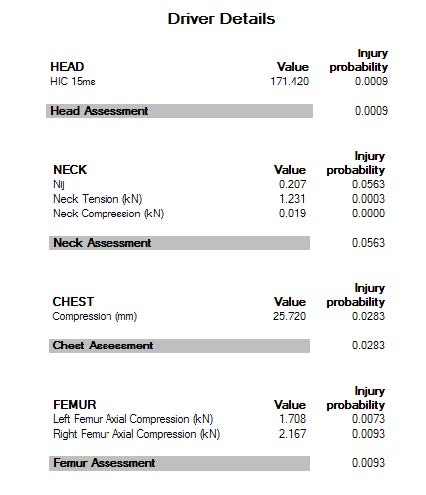
Madymo Frontal Impact Study of Optimized 5th Passenger Model : 35mph
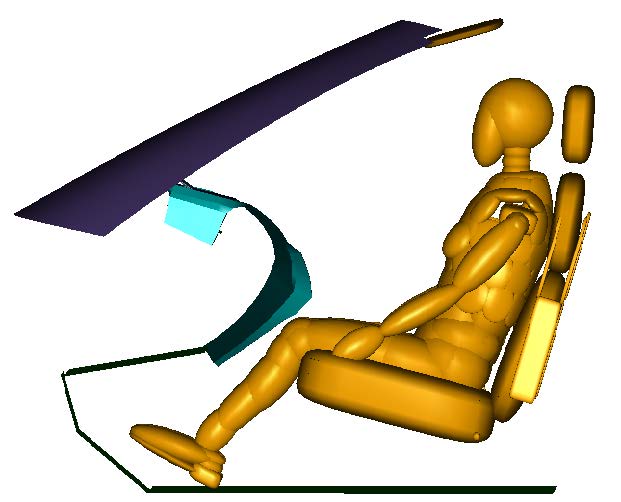
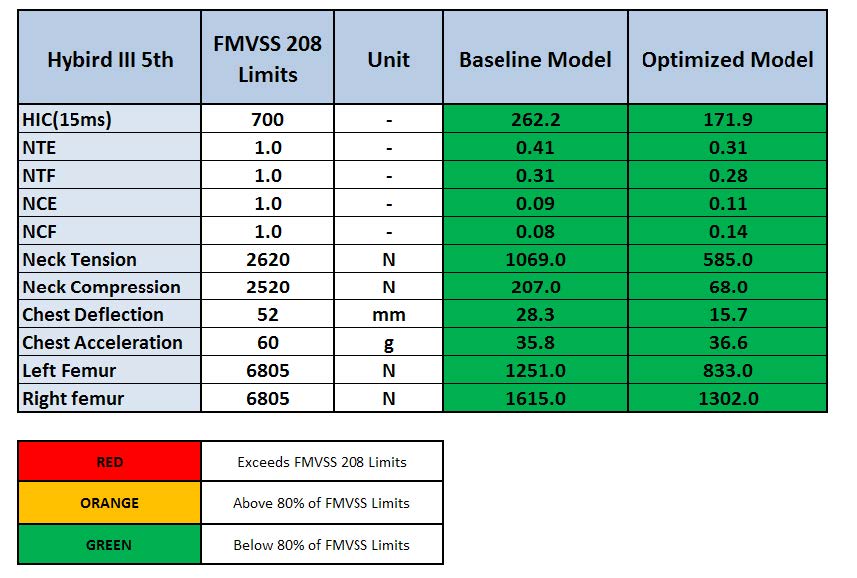
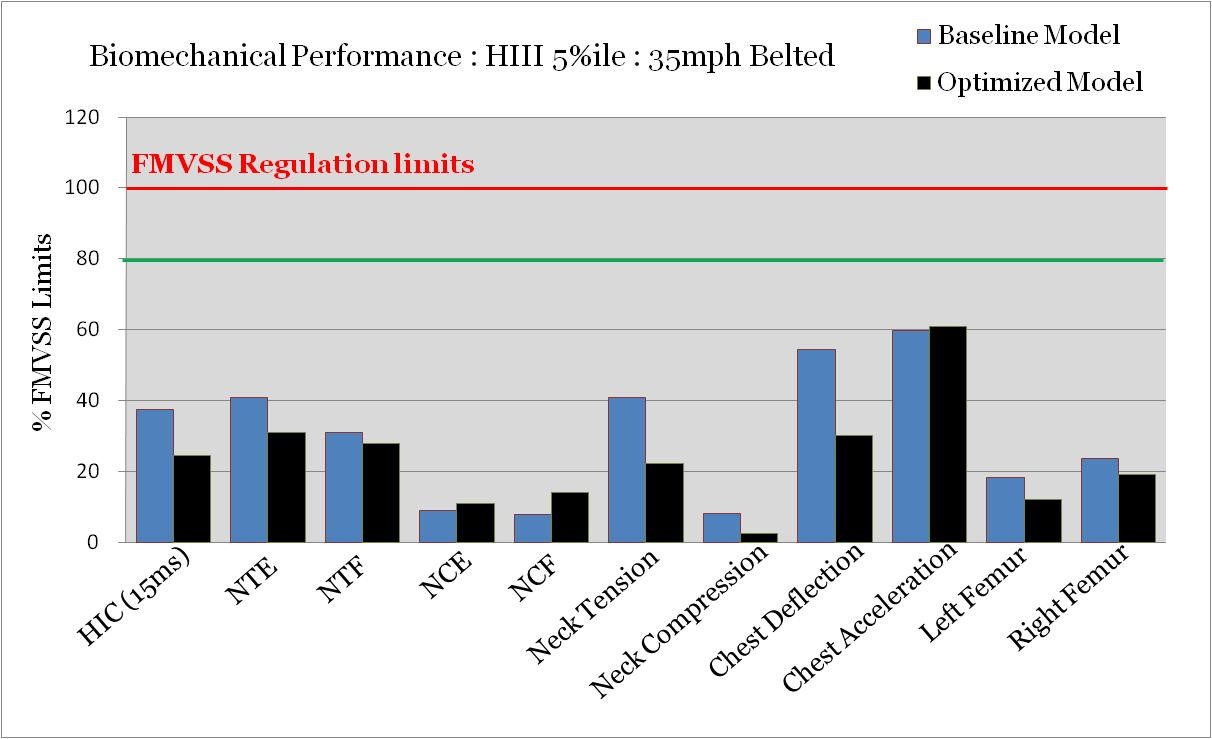
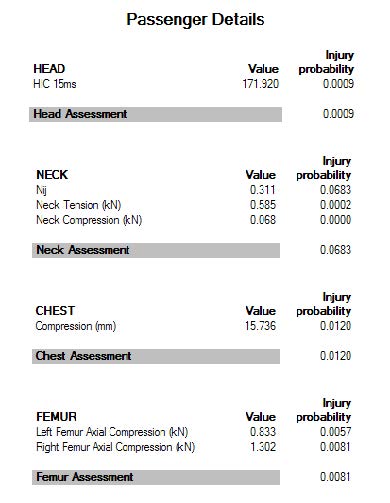
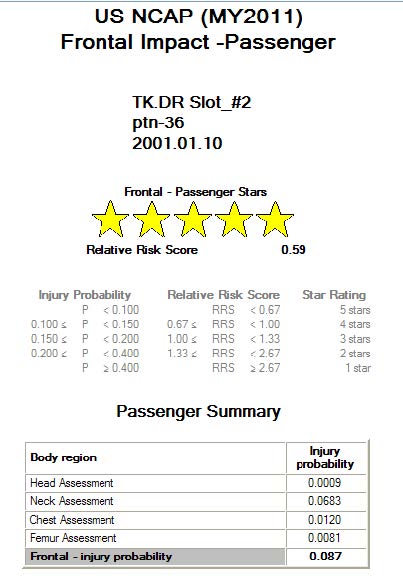
Madymo Frontal Impact Study of 50th Driver Model: 25mph Unbelted
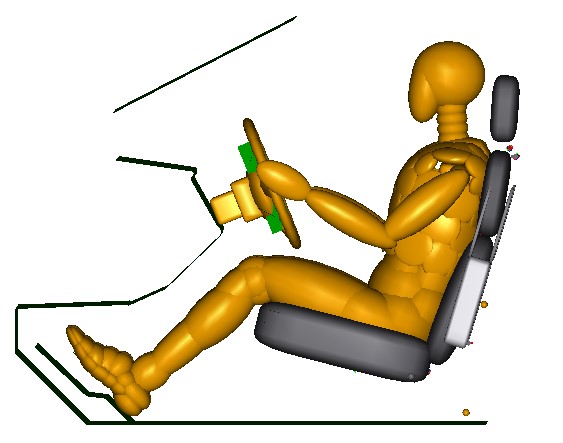
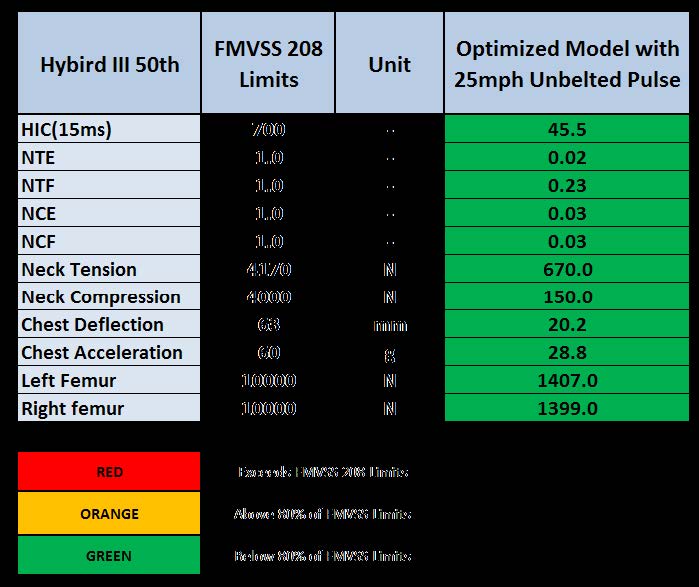
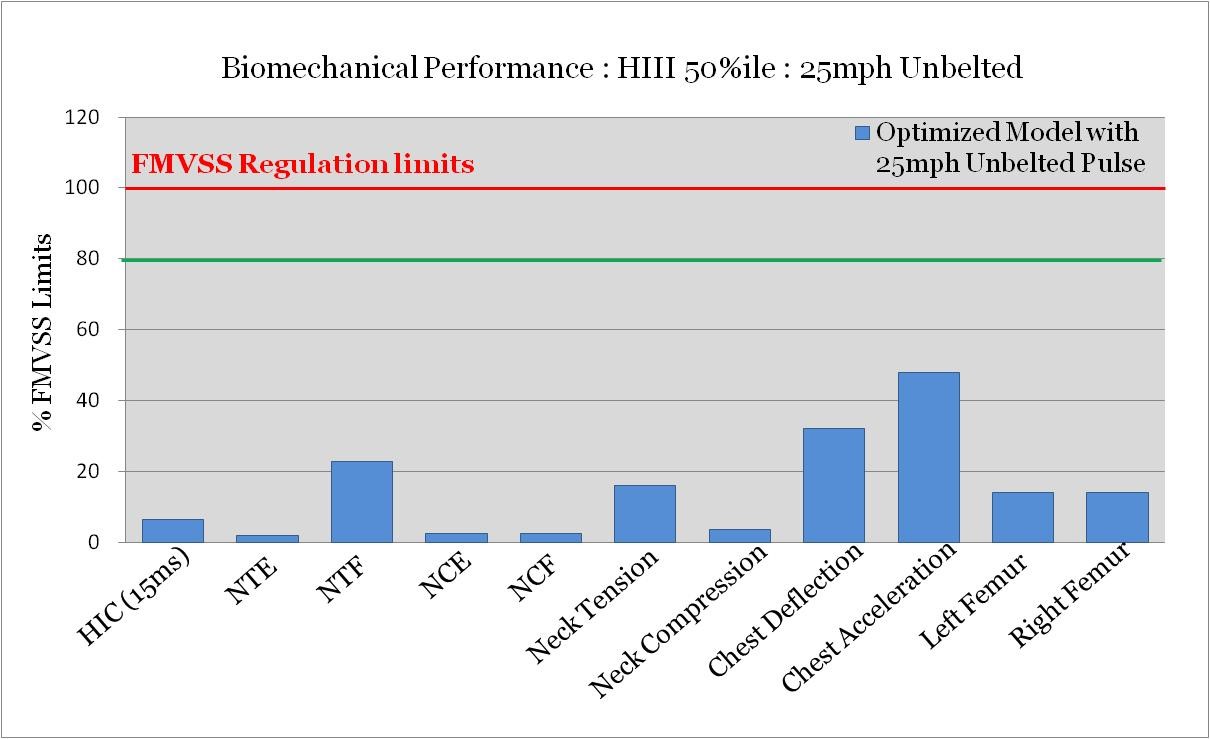
Madymo Frontal Impact Study of 5th Passenger Model : 25mph Unbelted

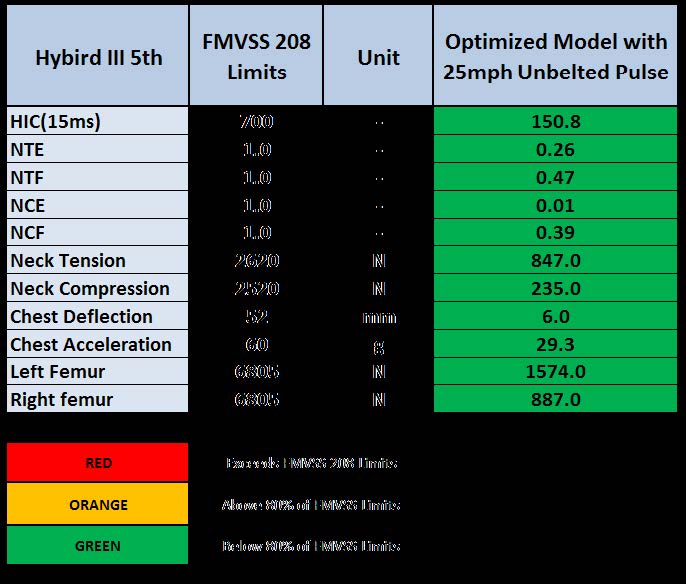
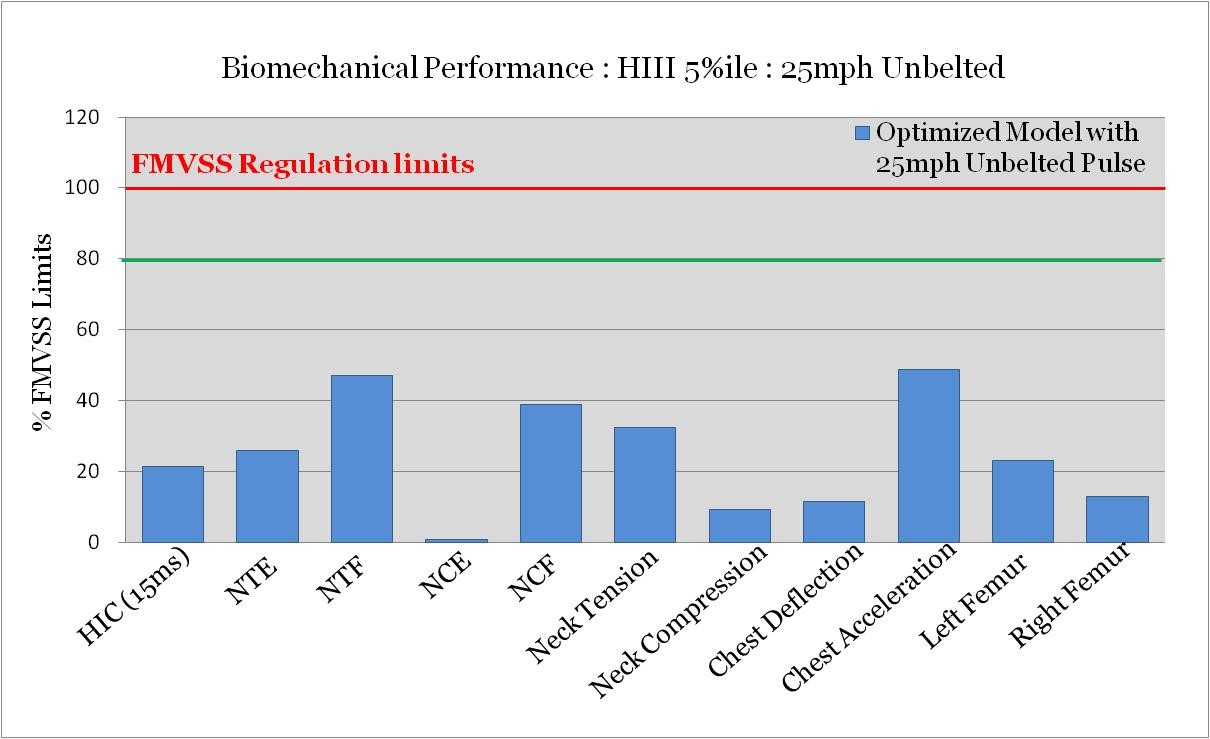
Conclusion
Critical responses such as chest deflection, HIC and NIJ are reduced which helped achieving 5 star ratings for both driver and passenger.
25mph unbelted 5th and 50th show performances below 45% of FMVSS208 limits.
The trend analysis shows the chest deflection, HIC and NIJ and can be further reduced with some optimizations to the restraint system.
Rear Belted Impacts (25mph)
In rear impacts, the CBM motion is reversed. The headrest moves up and forward to restrain the head sooner. HIC values are over 50% lower with the CBM. Neck and NIJ load levels are well below 1 (0.5- 15% of maximum). In general, other differences are large but not of significant magnitude.
Vibration Transfer tests
The vibrations test performed on the shake table (Photo shown on right) is a procedure that is valid for testing in aircraft seating, large public transportation, heavy equipment seating, large 4x4 rigs, and RV’sand generally, transportation seats.
The improvement of the CBM Seat for large transport application is to provide an angular motion isolator. This reduces vibrations and stressful forces in the neck, chest, lumbar joints, pelvis, and legs by providing automatic seat angle tilting with instantaneous, self- angular adjustment of the seat cushion. For motion sickness concerns (0 to .5 Hz), tests indicate the CBM reduces vibration transfer by approximately 75%.
Repetitive stress of vibration transmission is reduced with lower magnitude forces acting on the body.
For health, comfort and perception issues ISO 2631-1 (Mechanical vibration and shock - Evaluation of human exposure to whole body vibration) is most concerned with z-axis values in the 4.4 - 9.5 Hz range where its frequency weighting factor, Wk is over 1.
Figure 9: Vibration transmission on z axis
As shown in Figure 9, the CBM Seat, as tested for a truck, reduces vibration transfer in the primary area of concern. This reduction is a significant benefit for extended driving periods, especially for full time drivers. ISO 2631-1 is also most concerned with values on the x and y axes in the 0.9-1.3 Hz range, where its frequency weighing factor, Wd is over 1. As shown in Figure 10, the CBM Seat noticeably reduces vibration transfer in the primary area of concern.
Figure 10: Vibration transmission on x, y axis.
Overall, vibration tests confirm that the CBM Seat enhances performance by reducing the transmission of peak vibrations to the body. The most noticeable improvement appears on the z-axis. Also improved is the x-axis transfer (compression, z and shear loads, x, y).
CBM Models and Features
All models have the CBM Arcuate Seat Pan Motion and Backrest motion for continuous support. Models 300 and up may include the Spherical path of Motion for offset and side impacts Component as covered in US Patent # 7780230. All Models can provide All-Belts-To-Seat structure.
Model 100
CBM Seat pan and lumbar, auto tilt adjuster with detached upper backrest and side bol- sters. CBM-headrest is optional.
Model 200
CBM Seat and 2 piece backrest, auto tilt adjuster with CBM headrest with detached side bolsters.
Shown in normal position and fully deployed.
Model 300
One piece backrest and head- rest recliner with detached side bolsters with CBM headrest.
Model 400
Two piece backrest and head- rest recliner with integral side bolsters with CBM headrest.
Model 500
One piece CBM backrest and headrest recliner with integral side bolsters.
Benefits of the Counter Balanced Motion Seat
Comfort Features
Automatic seat tilt and backrest recline for comfort without complex mechanisms.
Automatic, self-adjusting lumbar support.
Seat tilt-lock control with instantaneous release to insure that CBM performs for safety.Reduction of vibration transfer and cases of motion sickness.
The seat motion and excellent support actually makes one feel safe. The reaction from people ride-testing the CBM Seat is “I want this seat in my car!” The CBM Seat’s passive qualities insuresconsumer acceptance.
Front Impact Safety
The CBM Seat acts as a passive restraint system to reduce head, chest and lower body injury.
This allows for the use of lower pressure air bags and softer belt characteristics.
Rear Impact Safety
The CBM Seat in rear impact tests, shows an 18% reduction in HIC values and a 6% reduction in neck loads:
Reduced head trajectory in both directions, rear impact loading and forward unloading.
Reduced HIC, neck and chest loading values while absorbing forces of the lower body.
Improved Safety Standards
Results of both, crash testing and computer modeling show significant reduction of injury loads in frontal, offset, unbelted and rear impacts. This presents an outstanding improvement to automotive safety.
Increases safety: The CBM Seat significantly reduces crash forces on the body and can noticeably re- duce lower body injuries. It improves the performance of other safety restraints, allowing safe depow- ering (reducing pressure) of the air bag.
CBM Seat Cost, Savings and Offsets
The CBM Seat mechanism is an efficient and cost effective design to manufacture that provides backrest recline and seat tilt adjustment controls, for comfort and safety. This reduces other restraint modules costs while adding important features.
Automatic seat tilt and backrest recline for comfort without complex mechanisms. Automatic, self-adjusting lumbar support.
Seat tilt-lock control with instantaneous release to insure that CBM performs for safety. Reduction of vibration transfer and cases of motion sickness.
This allows for the use of lower pressure air bags and softer belt characteristics.
Reducedheadtrajectoryinbothdirections,rearimpact loadingandforwardunloading. Reduced HIC, neck and chest loading values while absorbing forces of the lower body.
Added Features
Seat and Lumbar Auto Tilt Adjuster
Frontal, offset and rear impact safety
Simplified, easy adjustment mechanism
Superior comfort
Cost Savings
Motorized Seat Tilt parts, one motor
Active Head Restraint module
Knee Airbag Module not required
All Belts To Seat (ABTS) structure
